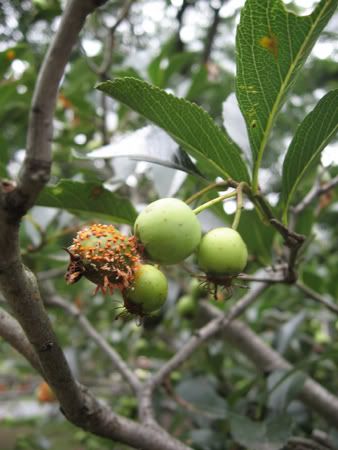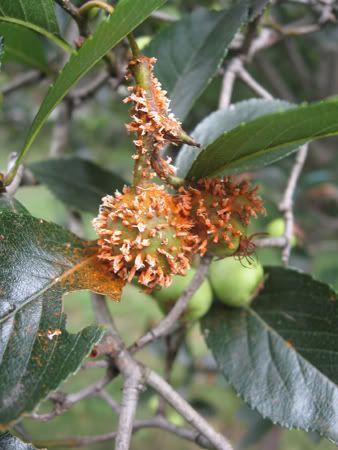365 Urban Species. #210: Quince Rust

Photos by urbpan. Location: ornamental hawthorn tree on Parkway Road, Brookline.
Urban species #210: Quince rust Gymnosporangium clavipes
"Rusts" are fungi that infect plants, reproducing with galls that often produce orange spores, resembling iron oxide. Many different cultivated plants are infected with rusts, keeping agricultural researchers busy with controls and preventative measures. Quince rust is a close relative to the more well known cedar-apple rust. These fungi have very interesting life cycles, involving alternating host plants. The fungus infects red cedar (Juniperus virginiana), and when mature, produces a gelatinous gall that releases spores that must infect certain trees in the rose family (apple, quince, hawthorn, etc.) in order to continue the life cycle. When the tree fruits, some of the fruit erupt with orange spore-producing projections. The spores from these projections must infect red cedars in order to continue the life cycle, and so on. Fortunately, from the point of view of the fungus, red cedar is a popular choice for urban landscapers, as are many species of hawthorn and flowering crabapple. This organism is hated by ornamental tree nurseries, but is fascinating to the urban nature lover. If not fascinated, one can be amused by tossing the infected fruit onto a hard surface, where it lands with a dramatic puff of spores.

For another gall-producing fungus, see black knot.